Here’s a short talk I gave on Sacred Geometry and Hermetic Laws July 9, 2017 for Ocean Unity, of Newport, Oregon. Enjoy! :-)
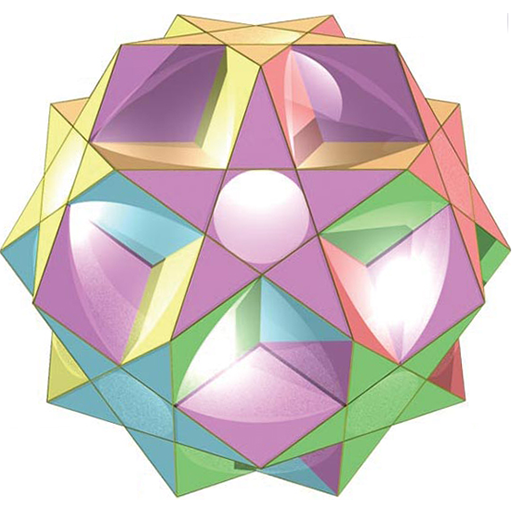
Sacred Geometry Media Resource Blog
by Bruce Rawles
Here’s a short talk I gave on Sacred Geometry and Hermetic Laws July 9, 2017 for Ocean Unity, of Newport, Oregon. Enjoy! :-)

by Bruce Rawles
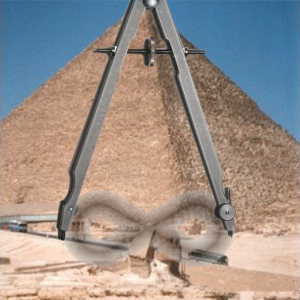 Dave Cohen (a.k.a. Davie Crockett) and I shared this conversation about “7 Hermetic Laws, 2 Thought Systems” which is Chapter 3 from the book The Geometry Code: Universal Symbolic Mirrors of Natural Laws Within Us; Friendly Reminders of Inclusion to Forgive the Dreamer of Separation on 15 November 2015, on his LA Talk Radio show.
Dave Cohen (a.k.a. Davie Crockett) and I shared this conversation about “7 Hermetic Laws, 2 Thought Systems” which is Chapter 3 from the book The Geometry Code: Universal Symbolic Mirrors of Natural Laws Within Us; Friendly Reminders of Inclusion to Forgive the Dreamer of Separation on 15 November 2015, on his LA Talk Radio show.
Here is an excerpt (the first two sections) from Chapter 3 that served as a springboard for our conversation:
Seven Changeless Laws About Change
Universal laws or principles, known from ancient times, have long been revered by those seeking to find the unchanged, unchanging and unchangeable truth underlying all form and expression. Ultimately, we all seek the dependable, reliable and consistent: something we can honestly trust. Eventually we give up on trying to make our faulty inferences work from isolated, special cases (our lives on planet Earth) and the distortions of perception – we come to the realization that we must find rules that are always true and generalize if we want a happy solution to the dysfunctional practice of taking our personal interpretations seriously. If we base our choices on an ever-shifting landscape founded on differing opinions and values, how can we get our true bearings? If we attempt to judge from a world that not only changes with time and space but from person to person, and culture to culture, isn’t the very basis are we using flawed? It’s all pretty silly to rely on circumstances, conditions and ephemeral events that morph and vary with the whimsy of fate and the biases of our tiny human perspectives. But, one asks, what else do we have to go on? Upon what else can we rely? What cues for guiding our lives do work? It’s obviously helpful to find laws or principles that do not change. Otherwise we just have to keep starting over and over again, relearning every time the temporary guide changes, never certain, secure or serene about where we’re placing our trust.
Identifying With What Never Changes
There are seven Hermetic laws or principles that have been known since antiquity, attributed to Hermes Trismegistus of pre-dynastic Egypt. These laws work all the time, in every situation, regardless of one’s circumstances, geography, status, demographics or any other factors. They apply universally. These seven laws also have completely different meanings, interpretations and outcomes depending on which thought system or internal teacher we use to apply them with. Learning about laws is only truly helpful if we have a purpose intended for our liberation – a reason for applying the laws. As we become aware that we are never exempt from universal laws, we realize that our freedom waits for us to unlock the code and practice these laws with intelligent, thoughtful application. As we discover, the only truly helpful way to apply them is to apply them with the assistance of our ever-present, transpersonal inner guide; this helps us strengthen our identification with what never changes. Otherwise, we’re back to identifying with the changing, fluctuating, vacillating tides of fate, fancy and fantasy. Identifying our Self with what is eternal anchors our awareness in truth rather than what inevitably disappoints, decays and dies.
This interview is part of an ongoing series where we discuss one chapter (about one per month) from The Geometry Code book until we’ve gone through all 10 chapters, including the 7 Hermetic Laws from the Kybalion and related geometric symbols.

If this conversation piqued your interest, you can read the first chapter of The Geometry Code: Universal Symbolic Mirrors of Natural Laws Within Us; Friendly Reminders of Inclusion to Forgive the Dreamer of Separation for free by (also free) subscribing to the GeometryCode.com monthly bulletin. Enjoy! :-)
by Bruce Rawles
The Introduction to this website (Sacred Geometry Introductory Tutorial) begins with a geometric symbol that is perhaps the simplest and yet most profound – the circle. Circular patterns and archetypes appear in countless variations in nature, art, architecture, engineering, and just about every area of life we can imagine. Here are a few familiar examples; I’m sure you can think of countless others, both microscopic, macroscopic (telescopic) and in between, in all dimensions of space, time, metaphor, and thought. We touched on the sphere (Music of the Spheres – The Planets) in a recent post; the 2-dimensional counterpart to the sphere is the ubiquitous circle and provides the foundation for it’s rotation into spheres of any number of dimensions – the quintessential template for polytopes beyond our imagination. Rather than getting boggled or bogged down with those mind-warping ideas, let’s return to the simplicity of the circle.

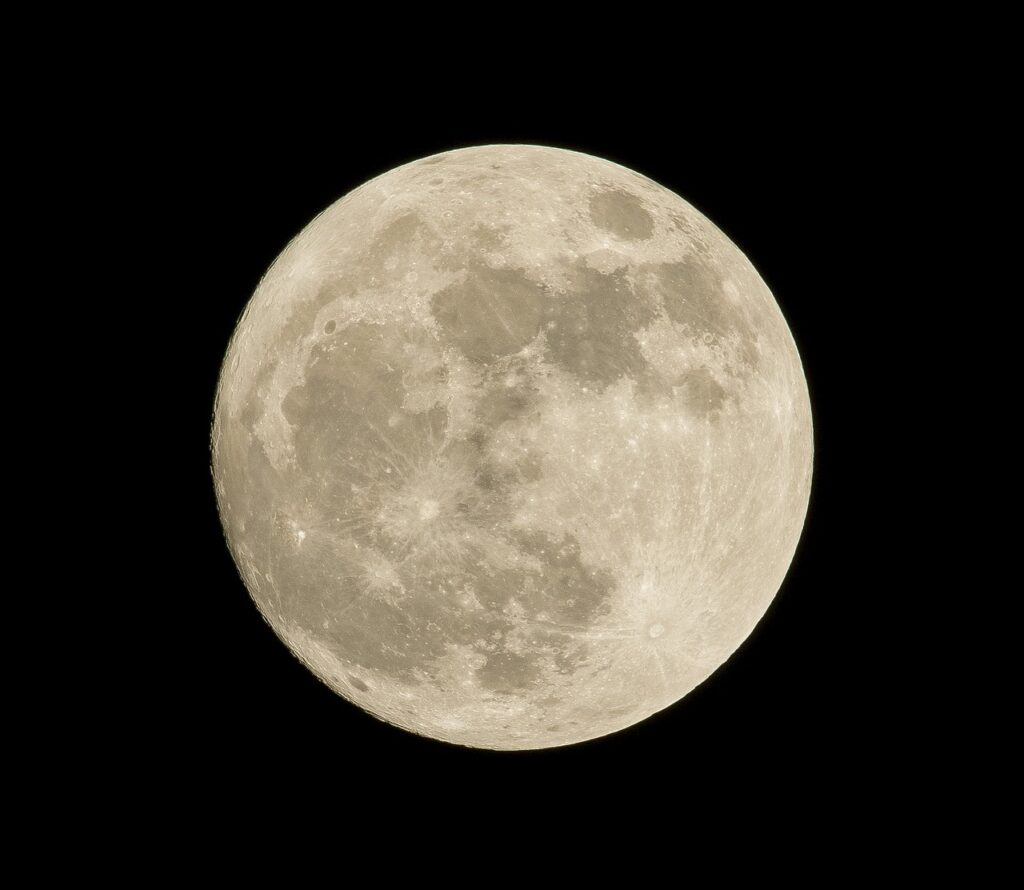







All of these visual examples are reflections of a form reflecting an ideal; here is what appears in the Introduction to this website (slightly edited from the original):
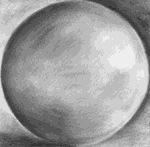
(charcoal sketch of a sphere by Nancy Bolton-Rawles)
Starting with what may be the simplest and most perfect of forms, the sphere is an ultimate expression of unity, completeness, and integrity. No point of view is given greater or lesser importance; all points on the surface are equally accessible and regarded by the center from which all originate. All atoms, cells, seeds, planets, and globular star systems echo the spherical paradigm of total inclusion, acceptance, simultaneous potential and fruition, the macrocosm and microcosm.

The circle is a two-dimensional shadow of the sphere, regarded throughout cultural history as an icon of the ineffable oneness; the indivisible fulfillment of the Universe. All other symbols and geometries reflect various aspects of the profound and consummate perfection of the circle, sphere, and other higher dimensional forms of these we might imagine.
The ratio of the circumference of a circle to its diameter, Pi, is the original transcendental and irrational number. (Pi equals about 3.14159265358979323846264338327950288419716939937511…) It cannot be expressed in terms of the ratio of two whole numbers, or in the language of sacred symbolism, the essence of the circle exists in a dimension that transcends linear rationality. Our holistic perspectives, feelings, and intuitions encompass the finite elements of the ideas within them, yet have a greater wisdom than can be expressed by those ideas alone.
When I was writing my first book (Sacred Geometry Design Sourcebook – Universal Dimensional Patterns), the cover art as well as a majority of the 1300 images (including corner “thumbnail” variations) feature circles, either directly or indirectly, so I made a graphical index, rather than a text-oriented one; the dots that dominate the first column (circles and spheres) in these 2 pages hint at the importance of these primal, archetypal, quintessential symbols: circles and spheres.


When I was writing my second book (The Geometry Code: Universal Symbolic Mirrors of Natural Laws Within Us; Friendly Reminders of Inclusion to Forgive the Dreamer of Separation) I also used a “Fruit of Life” symbol (6 circles around an inner circle) to represent the interconnectedness and inseparability of all aspects of what is eternally true, reflected in the 7 Hermetic Laws of antiquity. These 7 circle-framed images (along with the other supporting graphics) are all set within a circle which intuitively reminds us of the infinite and eternal in our minds.
On page 62 of the Geometry Code book, I shared an idea that I find increasingly more helpful in both pragmatic and profound ways. Here is the graphic and supporting text for this portion of the chapter “Mentalism: 1st of the 7 Hermetic Laws”:
The Wikipedia definition of scapegoat is “Scapegoating is the practice of singling out one child, employee, member of a group of peers, ethnic or religious group, or country for unmerited negative treatment or blame.”

The biblical story of the scapegoat offers a very helpful clue. It employs the symbol of the circle as a mnemonic for practicing inclusion or exclusion. In historic accounts, the guilt (sins) of the community were projected onto a goat, which was then banished to the realms outside the inner flock – peripheral to the circle of what we’re willing to accept or allow in our minds. Everything within the circle is OK (innocent as lambs), and if you’re outside, tough luck, goat! The problem is that the very premise that divides wholeness into parts is flawed, and even the ‘good’ that remains begins to be suspect because of the inherent lack of trust. The circle closes in and eventually strangles the dualis- tic split mind into oblivion; it becomes a singularity and winks out; but not without a lot of grief and struggle!
Seeing ‘others’ as ‘out there’ throws away the gifts they bring to us each ʻpresentʼ moment that we lucidly bring their symbolic contribution as mirrors of self back into mind. This works for both seemingly positive and negative experiences, until ultimately we realize that any so-called good experience (e.g. pleasure) in the world is no better or worse than any so-called bad experience (e.g. pain) in the world, because those experiences are all projections of a massive dream that we’ve made up to reinforce the belief in separation. Ego can use any excuse to squander the gifts by assigning ‘otherness’ to others and losing the meaning that the intrinsic connection – always in mind – can bring.
Sometimes it’s blatant when we intentionally erect an inner wall and make a fence around those we ‘like’ or agree with and those we’re not so fond of. This has nothing to do with behavior since it would be impossible to physically assist or care for everybody (let alone all the animal, vegetable, and mineral ‘life’ on just this third spheroid helically spinning around our favorite star). However, it has everything to do with inwardly caring for all, equally. This is an egalitarian ideal we probably all pay lip service to in various ways, but then often find ourselves annoyed with certain ‘others’ or internally profiling a group (whether a species, family, region, nation, or galaxy) and then suddenly – Whoops! – there’s that nasty we/they paradigm in action again, begging for our self-forgiveness.
The profound helpfulness of these circle symbols is evident when we consider that a circle of infinite scope – total inclusion – has no one left out, no one excluded, no one denied, and all equally vital to the whole; each mind embracing this idea IS the whole seen holographically. When, on the other hand, we go with the polarizing default of inner/outer, we/they, us/them, no matter where the line is drawn – or whatever shape, for that matter, a circle is just a placeholder for any exclusionary perspective – we’re always at war with the alleged other in our mind. No peace is possible when the foundation for peace (total inclusion) is denied.
The pragmatic benefit of identifying with the “infinite circle” that includes all of us is that – with considerable practice! – we can train our minds to realize that we can truly afford to “Be kind, for everyone you meet is fighting a hard battle.” Even if there’s no instant transformation/manifestation in the surreal world of our space-time dreams, there is always an opportunity to forgive ourselves for dreaming of separation by seeing our shared interest of peace and benefitting from a tranquil mind in the process, regardless of what seems to be happening around us!
Since (in the USA at least) this is an election year, I try to remind myself that we only get to vote every year or so, but we vote for either the infinite (transpersonal) circle of embracing everyone in our gracious consideration – or the finite polarizing (personal) circle which leaves some out; our scapegoats outside the circle become our projected “goat-scape” yet the problem of our dualistic dueling dream has never left our mind.
by Bruce Rawles
On this day in 2012 – a few months after introducing the print version, I made the Kindle version of my second book available: The Geometry Code: Universal Symbolic Mirrors of Natural Laws Within Us; Friendly Reminders of Inclusion to Forgive the Dreamer of Separation. I’ve appreciated all the support and encouragement during the past decade for this work, intended to be a bridge between two primary interests: the principle of interconnectedness reflected in geometric archetypes … and pure non-dual metaphysics.
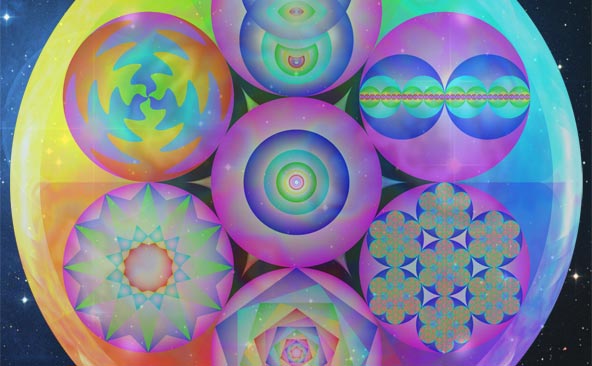
The cover art and the opening graphics for the last 7 chapters in the book are symbolic interpretations of the 7 Hermetic Laws – covered in detail on this website.
However, I just realized that I never gave very many details on the first geometric image used in the book, so here are a few. The image below depicts a geometer’s compass spanning an infinity symbol – to represent ideas that are “all-encompassing” – and the Great Pyramid of Giza, Egypt (the last remaining of the seven wonders of the ancient world) with the Great Sphinx in the foreground. There is abundant fascinating geometry in both the exterior and interior of the Great Pyramid including the phi and pi proportions, squaring the circle, many terrestrial proportions, etc. which are covered in various talks and essays on this website spanning several decades.
The Pyramid’s foundation idealizes the square, connecting the compass (vertical axis) and square (horizontal plane of materiality.) The four sides of the pyramid and the overall shape of the compass are triangular, signifying the reconciliation of polarities, meeting in the capstone atop the pyramid and the apex of the compass where both vision and inspired guidance are possible through the exalted perspective that sees all as equal.
Here is the foreward to the book by Gary Renard:
I met Bruce Rawles in Medford, Oregon in 2008 and again in 2009 and 2010 in Ashland, Oregon when he and Ed Karlovich hosted and promoted seminars I did there. During one of the car rides to the airport, he mentioned a book that he was working on that sounded unique and original. I was curious as to how he would incorporate the diverse disciplines of sacred geometry (which he has studied extensively), Hermetic philosophy with its unchanging laws of nature, and the non-dual metaphysics that is the essence of my life work, best known to many by the spiritual masterpiece, A Course In Miracles (ACIM).
He was quick to point out that it’s easy to get distracted or diverted by external indicators like geometric symbols and get bogged down in specifics or interpretations that lead away from wholeness and toward the problematic belief in the concept we call separation or ego. At best, symbols can be mirrors or reflections within a dualistic world that attest to principles guiding our minds back to an awareness that has no opposite, an experience of love that transcends anything that can be conveyed by words or symbols of any kind. These symbols, seen from that view that embraces oneness, reflect a healed mind, but are never the cause of it.
He also recognized that the very ‘universal’ laws that can seem to keep us stuck in the dream (to our detriment) can also be reinterpreted for everyone’s benefit by the inner teacher of kindness that ACIM refers to as Holy Spirit and my teachers abbreviate metaphorically as ‘J’. We can learn to trust this inner teacher and use every bit of feedback as cues or reminders to practice, practice, practice the spiritual art of quantum forgiveness, which sees our ‘problems’ as causeless, and therefore completely benign and forgivable.
Having acknowledged these two caveats, he has done a remarkable job of sharing how – by developing trust in the inner Inclusive Guide we all have in common – we can include the symbolic contents of our unconscious mind in very familiar forms, such as geometric ones, as feedback devices or memory jog aids to deepen our trust in our inner teacher. For example, Bruce points out how egos use circles dualistically to exclude and banish ‘others’ to the outer regions (and the equally unhelpful ‘special love’ for those ‘within the circle’), but can just as easily be reinterpreted to be infinitely large, including All as One.
Similarly, with his explanations of seven laws of nature, it becomes obvious that these unchanging rules (starting with the fact that the universe exists only in mind) can be directed by either the 100% sane thought system or the 100% insane thought system that we all share. The choice is up to us, moment by moment. Without the specific people and events of our lives – including the exemplified laws and forms we encounter – our unconscious guilt would never be revealed, released, and healed.
Countless other examples demonstrate the importance of forgiving the dreamer of separation; this work is a fun and useful addition to the list of ACIM studies books. Bruce and I share the kinship of all (not just those one would call students) learning to practice forgiveness, gently awakening our dreaming minds to Love that is beyond any words or symbols. Enjoy, and awaken.
– Gary R. Renard, the best selling author of The Disappearance of the Universe
by Bruce Rawles
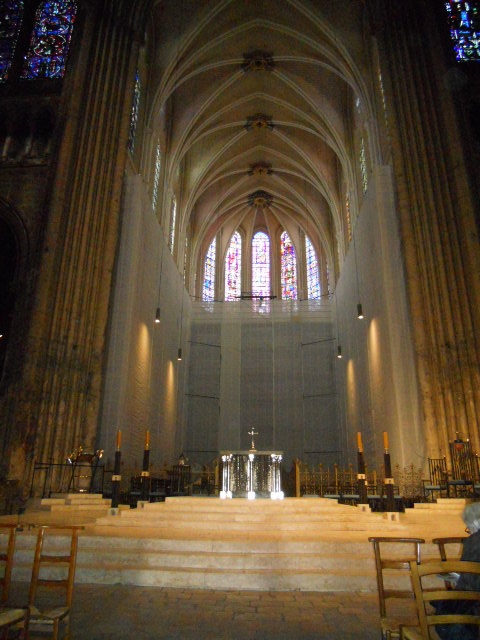
(Updated 14Oct2022):
I recently had the good fortune to discover a website with some superb content of interest to sacred geometry enthusiasts which is an excellent complement to the GeometryCode.com website: the Chartres-sacred-geometry.com website (now Chartres.GeometryCode.com) curated by fellow geometer and mystic, William Goldstein (a.k.a. Will Gold), entitled The New Invisible College. In recent email conversations with Will, we both realized the complementary nature of our websites; his website emphasized the vast cultural and historical precedent of global mystical traditions that have influenced all things geometric; mine emphasizes the interconnected geometric and mathematic bedrock of all forms that lead inexorably toward mystical thinking and experience. Both approaches inevitably guide us to similar conclusions about the sacred foundation in the mind within, behind, and beyond all forms and seemingly separate entities and identities. With this foundation, we’re led out of the metaphoric darkness of divisiveness and duality through the vision of sameness to a kindly view of our real shared nature.
Here are just a few examples of the many literary gems that Will catalogs and/or reviews via in-depth synopses. These have also been pivotal influences in my own path through geometry to a mystical appreciation of the unchanging underpinnings of life:
To pique your interest here is the intro page of The New Invisible College website, followed by another essay:
(Updated 21Jun2022):
There is a still place within us that is who we really are
A secret sacred chamber
When was the last time you opened those doors and went inside?
How much is there you have forgotten?
Have you even forgotten who and what you truly are?
Down inside us are jeweled caverns waiting to be explored
Are you ready to pry open those locks?
An underground river of lost knowledge beckons
Calls to us
Can we quiet ourselves to hear that voice?
Will we discover how much awaits us?
Can we regain the truth we once knew?
The holy light of divinity lives inside us
We can find it again
Don’t be shy or timid
Step boldly through these gates
Into depths beyond your imagining
Welcome back to all you truly are.
The miraculous
Awaits you.
Copyright 2022, Will Gold
Extending far back through human history in a large part of the world has been what we can call the “mystic tradition of the West”. Its teaching is that God, a kind of divine “being” of a magnitude we cannot even imagine, can be perceived tangibly as right here with us and inside us, that we and the universe we inhabit are, at their essence, nothing but God. For Jews who took their devotion seriously, like my Hasidic grandfather, reciting the Shema prayer multiple times each day was his affirmation that “I shall love the Lord my God with all my heart and all my soul.” This was no abstract, theoretical God but one whose presence was palpable. When, later, my mid-western Methodist in-laws thanked God with sincerity before every meal for the food, the “blessings”, they were about to receive, the sense they were actually communicating directly with God, that God was right there at the table with us, was just as real. Jesus himself had said, “You are God’s Temple, God’s spirit dwells within you.” It’s right there in Corinthians.
For thousands of years this personal communion with the divine, though also found in endless ordinary settings, has been at the heart of the “mystical path.” The sacred presence invoked in a Sufi prayer gathering can be not only tangible but overwhelming. The God we can sense right here, with us and inside us as well, whether in our homes, congregations, or at our dining tables, is very different from the remote, authoritarian father-figure God that is a mere abstraction. This perceiving the divine in all creation and wanting to comprehend the emanation of our “world” from out of this unity inspired what became known as the original “Invisible College” of spiritual adepts and seekers dedicated to probing the secrets of “sacred geometry”, the visible manifestation of the invisible divine structure of the universe.
At present, however, outside of Islamic cultures, our sense of direct connection with the divine and even of this possibility are rapidly disappearing. Our precious human identity as emanations of divinity is at risk of being lost forever. Awareness of God within ourselves and the world around us has rarely been at a lower ebb. We have lost connection with our true wellsprings. We have arrived at a juncture where we need to remind ourselves it hasn’t always been like this. Our separation from the sacred and its centrality to human life is a relatively recent development.
For as far back as you can go in human history, the question of the ultimate inner nature of human beings, and of the universe itself occupied a vital place in our cultures. Such questions were seen as at the core of human existence. A primary focus was the relationship of human beings and the creation we inhabit to a holy, timeless, ineffable but pervasive underlying force and intelligence within all creation. Now, however, we turn our backs on the quest to understand what we really are and the divinity that still dwells deep within us.
The mystical faith has never, however, died out. Instead, it retreated underground where it became known as the secret “underground river” existing beneath more conventional forms of religious life. For the mystic, God is an all -encompassing mysterious divine energy present everywhere, including inside us. For the mystic, God is still very much alive.
NewInvisibleCollege.com (Chartres-Sacred-Geometry.com)
Copyright 2022 Will Gold
This is a kind of study not found, with perhaps a few exceptions, on conventional college campuses. In academia, the esoteric, arcane, and metaphysical have, despite their enormous historical importance, been elbowed right out of the picture. I embarked years ago, on a grad school program, to study the history of alchemy and was met with stunned disbelief and redirected instead toward the life of Martin Luther. Today in academia similar boundaries and limitations persist.
Ultimately elaborate buildings are irrelevant to education. It is the quality of the learning that counts. The New Invisible College offers a diverse program of self-education. Our curriculum is organized chronologically: “First Civilizations”, “Earth Magic”(Megalithic), “Greece”, “Early Christianity”, “Middle Ages and Sacred Geometry”, and the “Renaissance”, with a concluding section on the “Magical Theater of our Minds”, our role in creating the reality we experience. We have posted additional brief sections on Alchemy and Kabbalah featuring especially insightful works on these elusive areas.
Within each subject area of this site, you will find synopses of some of the most valuable and important books on that topic. All the library you need is available right here for free by making your way through the Next, Next, Next links following each synopsis. Works are drawn from both leading academic and non-academic sources. We encourage you to dive in. Purchasing your own copies of books that reflect your own interests is, of course, even better. Studies encompass the following areas:
We begin with Egypt. Egypt remains, even after multiple millennia, a storehouse of secrets. We still don’t understand how the miracle that is the Great Pyramid was created. Outside of the narrow confines of academic archeology, the Great Pyramid and the nearby Osireion and Abydos temples, are now widely believed to have pre-dated pharaonic Egypt by thousands of years. We do know that technologies must have been used that we still don’t fully comprehend. Not only their scale is dazzling. The precision is also extraordinary.
According to Andrew Collins, the Great Pyramids appear intended to transmit a “legacy” for future times. “Through the universal languages of science, mathematics, and engineering,” Collins writes, “the builders were attempting to put on record their vastly superior knowledge and wisdom of geodesy, geometry, metrology, and harmonic proportions.” A tenth-century Arabic work maintains that the Great Pyramid was intended to be a record of advanced sciences “for the benefit of those who could afterward comprehend them.” By contrast, the usual academic and tour guide explanations are so comfortably pat, so blasé, that they seem almost comical. The glaring profound questions aren’t even tackled or confronted.
That the farther back in time you go, capabilities seem to increase exponentially, enhances the mystery. The unwillingness of academics and others to address the stunning, jaw-dropping physical facts of the Great Pyramid is, ultimately, pathetic and absurd. More recent investigations, by pioneering researchers like machinist Christopher Dunn and geologist Robert Schoch, take us much further into the realities of those puzzles. The reality of so many extraordinary wonders of ancient Egypt is sealed indelibly in stone. The question remains, however. If Egypt really was the first, from where, in turn, did this staggering outpouring of stunning accomplishment derive?
The ancient Egyptians were obsessed with the journey of the soul beyond the body, the “afterlife” to this human existence that they saw as interrelated with a path back to the stars. They viewed the eternal human soul as having a tripartite nature: light (Akh); the breath of life (Ba); and the principle of Ka that gives fixity to form. Our lives on earth were seen as way-stations on our return journey back to the heavens. To the ancient Egyptians, we are children of the skies.
Since the earliest times, electro-magnetism telluric currents within the earth and the courses of underground streams have been linked to the location of sacred sites. Chartres is positioned at the hub of such a grid and there have been shrines and temples there since long before the present cathedral was raised. These underlying forces integrate with and magnify the resonance of the cathedrals’ design. In England, these lines are called “ley lines” and have been known since Druid times. Pioneering researchers such as John Mitchell believed that in the far distant past entire landscapes were shaped to integrate with such forces, bringing fertility to the land above. Many of the most powerful English sacred sites, such as Glastonbury and Salisbury, are located atop these convergences.
As we go back several thousand years in time, we are increasingly in a realm of still largely unexplored mysteries. Geodesic power points were used as ritual convocation places. Startling “Cyclopean” megalithic architecture is found all over the world using massive stone blocks of over a hundred tons and posing additional unanswered questions. We become aware of being in a realm we still do not comprehend. What were the powers harnessed and unleashed? We are still far from fully understanding.
John Michell maintained that human life in Bronze Age times was “enriched by means of a force activated though the correct geographical relationship of sacred centers” and magnified, perhaps, by the raw hard stones of shockingly enormous edifices as well. Visits to such locations, especially overnight, can still, according to authors like Freddy Silva, result in “trans-dimensional experiences.” Alan Richardson recounts, “the barriers that usually separate dimensions of space and time” becoming, in such locations, “uniquely permeable”.
In ancient Greece, underlying truths were expressed that would become at the core of the Western Mystery Tradition. Pythagoras, Plato, and the “neo-Platonists” built on the heritage of Egypt, Sumer, Babylon, and Persia. In the fifth century BC, on the island of Samos, Pythagoras developed principles of relationships that would be at the center of geometric science, and of “sacred geometry”, ever since.
In The Republic, in the 4th century BC, Plato set out his “Parable of the Cave.” Most human beings, Plato wrote, spent their lives “underground” in darkness and ignorance because of their unawareness that the light of far greater knowledge was right there above them just a short distance away. What was beyond the mouths of their own caves was so unfamiliar, and often thus frightening, that most were unwilling to even attempt to venture up out of their darkness.
Belief in the higher potentialities of human beings was the most important legacy of the School of Plato. The key question was the fundamental nature of human beings. The viewpoint of the Platonists and Neo-Platonists was that, as expressed in the 3rd century CE Egyptian-Greco-Roman Hermetica that, “God is in all things, as their root and the source of their being”, that ultimately, “God is all things.” This conviction would become the foundation of both Platonism and the mystic tradition of the West. The Hermetica would become enormously influential, echoing the ancient Egyptian view of the divine roots and immortality of the soul.
“O humans,” ‘Hermes Trismegistus’ asks, “why do you give yourselves up to death, when you have been granted the power to partake of immortality?” Fourth century CE ne0-Platonist Iamblichus asserted that “If having abandoned your body, you come into the free aether, you shall be an immortal God, incorruptible and nevermore subject to death.” As one steps toward the realization of one’s ultimate nature, there was nothing more important than pursuing truth, the apex of human aspirations.
In the Greco-Roman world, Platonic and Pythagorean currents ran strong for centuries. Alexandria, in Egypt but also a center of Greek culture, became a hub of such thought. Around 50 AD, however, a burgeoning new faith based on the teachings of an obscure Jew named Yeshuah began to exert a growing influence. In Alexandria, Christian zealots attempted to suppress the old “pagan” philosophy. The new “Christianity” was, however, born from its own mystic core.
Jesus had likely been an Essene, linked to their devotional communities on both the Dead Sea and in Egypt. The Essenes were an ascetic, communitarian, mystic sect of Jews with their own connections to the land of the Nile. Their schools taught health, healing, and purification and, in Egypt, featured subterranean initiation chambers. Christianity too would teach the immortality of the soul and the possibility of transcendental union between human beings and God. Later, the fierce faith of the “desert fathers” aimed to follow Jesus’ footsteps and was far from the Christianity we know in the West today.
Early Christianity was intensely mystic, teaching that human beings could be fully equal to God the Father and that there was, in fact, no difference between the two. Gnostics maintained that Jesus was a human being who could be emulated. What Jesus had been, they held, all of us had the potential to be. Meister Eckhart would write that down inside us, “The seed of divine nature is never destroyed, only covered over.” This innermost chamber was, according to Eckart, where God is found.
By the seventh century, a new religion, with its own adherence to the transcendence of one God, was surging up out of the Middle East. One result was the Crusades, but there were other more peaceful inter-connections between newer and older cultures. In many ways, the East was more advanced than the West, much more the heir of the richly sophisticated cultures of antiquity. As interactions between East and West multiplied, the West rapidly discovered how much could be learned from their more highly developed neighbors. The heritage of the ancient world reached Europe via the Islamic lands. The Holy Land, with its Crusader presence, and Islamic-Christian-Jewish Spain became hotbeds of this cross-fertilization.
Al Andalous, as Islamic Spain was called, became the most populous country in Europe with advancement equaled only by Constantinople and Baghdad. The city’s largest library held 40,000 books. Al Andalous, Tim Wallace -Murphy writes, was characterized by “an almost insatiable passion for learning.” Philosophy, mathematics, geometry, physics, astronomy, astrology medicine, and magic along with the works of the Greek Platonists and Roman Neo-Platonists, alchemy, and kabbalah were all actively studied and translated.
Secrets and arcane knowledge from the East were soon being carried back West to Europe. Groups like the Knights Templar took a central role in this bridging. The knowledge of sacred geometry was carried west, where it would assume its most powerful expression at Chartres. Gothic architects saw natural forms as expressions of a deeper divine order. Rose-configured stained glass windows became the embodiment and foremost symbol of the gothic.
The ensuing “Twelfth-Century Renaissance” blossomed into a kind of “Golden Age” of learning. Alchemists tell us that the word “gothic” itself originally meant “magical”. In its transformative impacts, Gothic art was magical art. The architects of Chartres and other gothic wonders were fascinated by light. In the 12th century, Abbot Sugar of Saint-Denis, a pioneer of the gothic, had declared that “God is light”. The height of the Middle Ages was, in many ways, surprisingly accomplished. Louis Charpentier reminds us that, “Chartres Cathedral was brought into being by men who knew what they were about.” To Charpentier, the present cathedral resembles a vast musical instrument, its stones in a state of constant tension, that its builders knew how to “tune like harp-strings”.
If you have been fortunate enough to attend one of the evening music performances in the cathedral nave you won’t forget this sublime experience. The entire massive edifice seems to resonate. Poet Paul Claudel wrote that the masonry of Chartres was “so taut that you could make it ring with a fingernail”. Gothic architecture, Charpentier informs us, “used dynamic pressures to direct forces upward. The great Gothic cathedrals were solidly grounded in the forces of the earth while simultaneously soaring into the heavens. The result was perhaps the finest vessel ever constructed for passage into transcendental dimensions”.
According to Peter Ellard, 12th-century scholars at Chartres perceived all of reality to be an expression of the mind of God. They immersed themselves in the rediscovered philosophical works of antiquity and sought to unravel the mathematical foundations of the manifestation of the divine into the physical world. A “clear grasp of this interface could, they believed, open the way into the hidden dimensions where God dwelled.” They were eager to comprehend the divine architecture of the universe. Art had one primary purpose, to make the harmonic structures of the world visible.
A cathedral that was a microcosm of the greater macrocosm, they began to discover, could be a fusion between the human and the divine. Professor Otto von Simpson wrote that the masters of Chartres believed “mathematics to be the link between God and the world, the magical tool that would unlock the secrets of both.” To enter a temple constructed wholly of invariable geometric proportions was to enter an abode of eternal truth. Rose windows represented the “total infusion of matter with spirit.”
Already though the dark shadows of the Inquisition were lurking in the wings. As the Inquisition gradually strengthened its grip, there was much insight that would be lost. In the early 13th century, the bloody “Albigensian Crusade” against a fast-spreading egalitarian “heresy” assaulted Southwestern France.
Two hundred fifty years later, the coming of the Renaissance brought profound new freedom to Europe. Released at last from the repressions of the Inquisition, the arcane, esoteric, metaphysical, and occult flourished. Awareness of unprecedented new potentialities for what human beings could be extended, at times, even into the Vatican itself. The vast, elegant, symmetry of the colonnade of the new Saint Peters Square centered on its especially enormous Egyptian obelisk, hauled back to Rome from the Nile with tremendous effort.
Equally wondrous are the elaborate soaring intricacies of Bernini’s Fountain of the Four Rivers in the nearby Piazza Navona crowned by its own majestic obelisk. The overwhelming, and also nearby, Trevi Neptune Fountain, completes this marvelous triad of the outpouring of exuberant Baroque splendor. Opportunities for breaking new ground and re-opening the secrets of the past grew steadily greater. The heights of Baroque art in painting, sculpture, wood-carving, inlay, metalwork, engraving, and spatial design became, in their own way, as marvelous as the gothic had been.
The “reality” we dwell within, that we inhabit, is, of course, not only a product of history. It is also the manifestation of processes deep within our minds themselves which are, ultimately, embodiments of the mind of God. Why and how do we project this reality we experience? How is it shaped? Can we mold it differently? Is our “reality” within our own control? These are key questions to also be explored here at the New Invisible College, taking us into emerging developments in quantum physics.
There is so much more going on inside us, in creating our world, than we are usually aware of. Here at the New Invisible College, we aim to help open those doors. Contributions to help support the work of the New Invisible College are greatly appreciated. (See Contact page for details on donations.) Welcome to your journey! The horizons are limitless. Where you choose to go and the outcome is up to you!
(formerly NewInvisibleCollege.com / Chartres-sacred-geometry.com; now Chartres.GeometryCode.com)
Copyright 2022 Will Gold